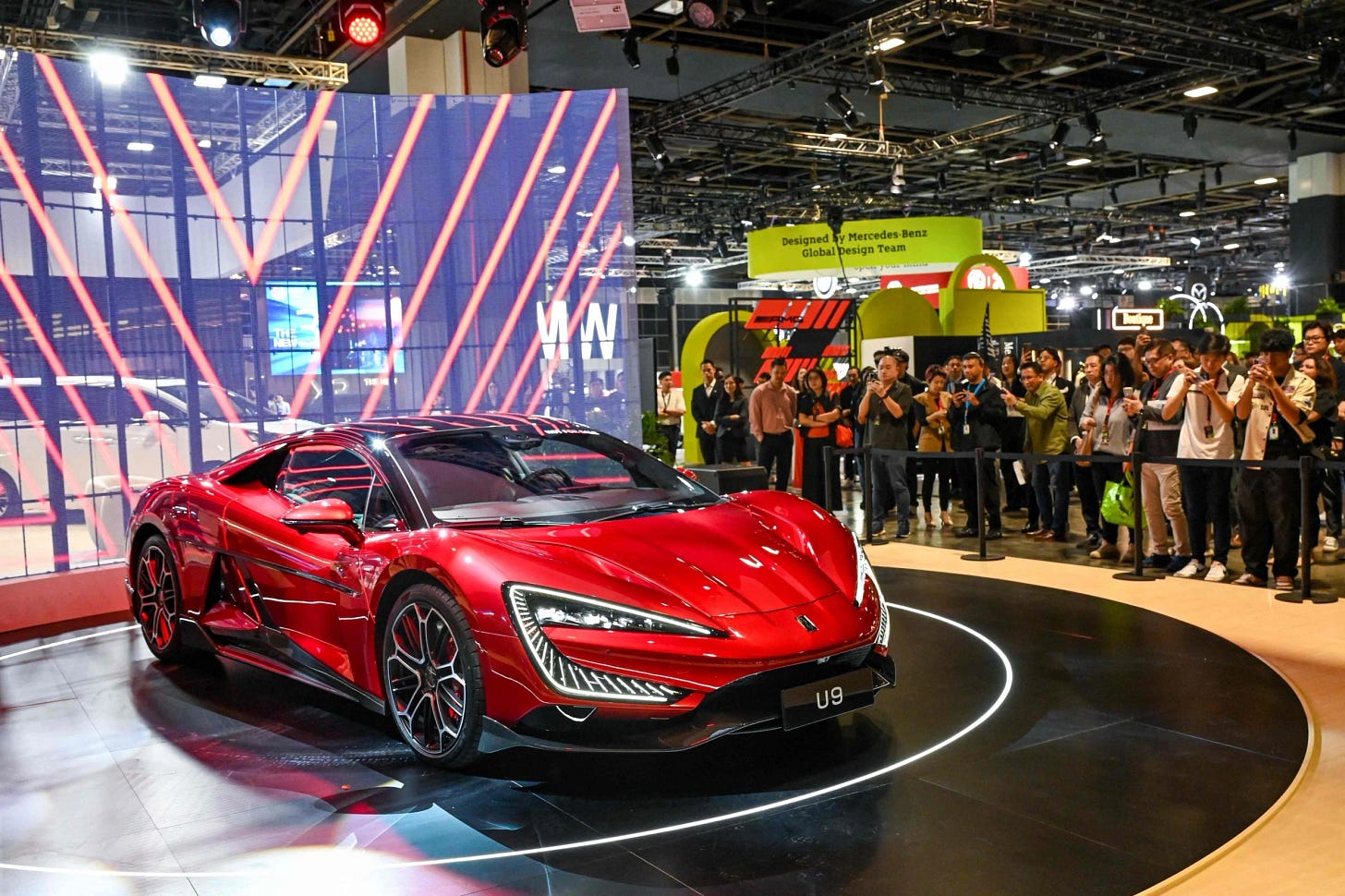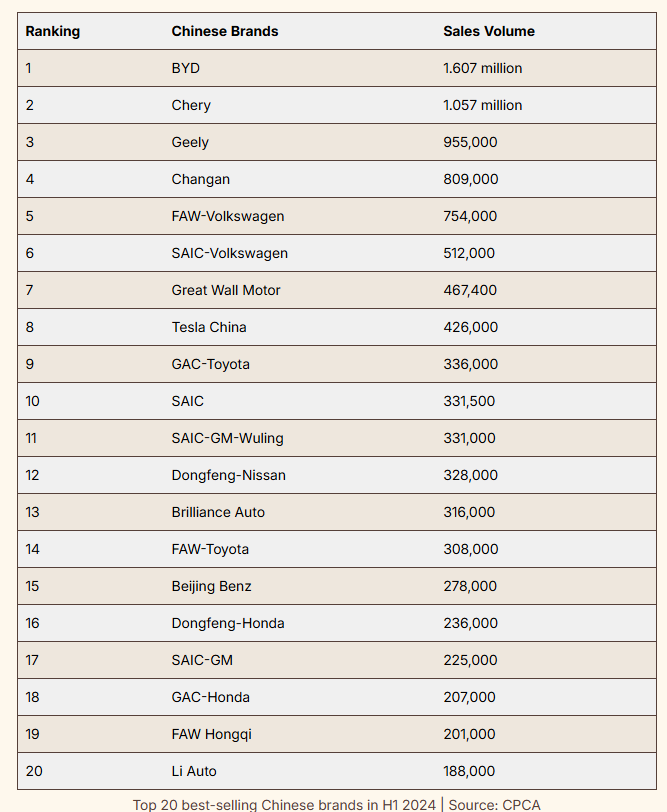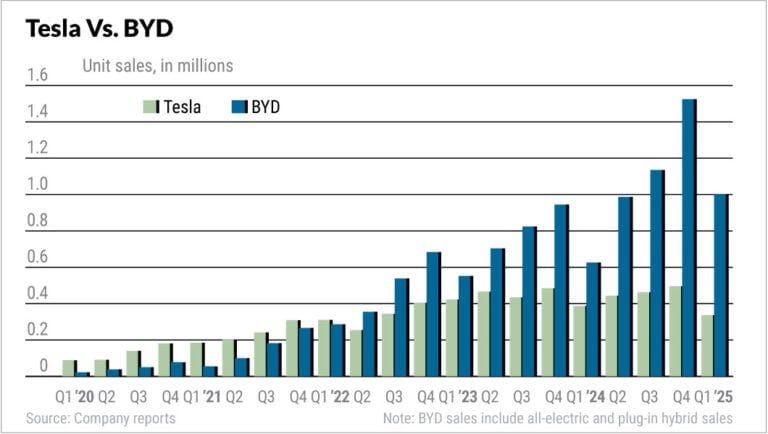Chinese EV Giant BYD Releases “God’s Eye” Self-Driving Feature As Sales Smoke Tesla, Company Builds Factory City The Size Of San Francisco
This year “will be the first of intelligent driving for everybody. It will become a must-have in the next two to three years, just as a seat belt or airbag.”

BYD, a Chinese electric vehicle manufacturer that most Americans have probably never heard of, is dominating the EV market domestically and around the world as Elon Musk’s Tesla is facing some real troubles. Due to the United States’ longstanding protectionist measures such as tariffs and other trade restrictions against Chinese EV imports, Americans are largely unaware that China is producing significantly cheaper and efficient products.
Whether or not you are a fan of EVs, keeping things strictly in an economic and technology context, BYD and other Chinese brands are arguably just as good if not better than American brands such as Tesla, and overall are much cheaper.
BYD has now become the world’s largest EV manufacturer.
To put things into perspective, Rest of World compiled data that demonstrates that BYD’s most affordable models are way less expensive than Tesla’s most affordable models. In China, a Tesla will roughly cost around $32,000 whereas the most affordable BYD model would be around $9,60.

The outlet added:
BYD is reportedly seeking to be more competitive in China by asking its suppliers to reduce prices, while it also looks to set up more factories outside of its home base. Doing so would reduce export costs, and potentially BYD’s global prices. “Being able to compete on cost is a huge thing in the Chinese EV market,” said Whitcombe. “And then, as BYD expands globally, the knock-on effect is that the vehicles are able to be produced cheaply.”
Tesla is primarily focused on sales in the U.S. and Europe. The company doesn’t sell in any African or South Asian country, and only sells in two Latin American countries: Mexico and Chile. BYD, on the other hand, has expanded in several markets outside of Europe, particularly in Latin America and Southeast Asia, according to Whitcombe. Rho Motion found that around 60% of the EVs sold in Brazil last year were BYD models, he said.
“They’re really looking to take hold of markets where other electric vehicle manufacturers are not yet expanding into — that seems to be their top priority,” said Whitcombe.
BYD is ramping up production outside China, where the cost of making EVs is relatively low. Whitcombe said he expects the company to have another big year in 2025 and that he is watching to see whether its global expansion will have a long-term impact on prices. “As production ramps up and volumes ramp up, it could be really interesting when BYD has a number of facilities globally where they can produce EVs at a much cheaper price than anyone else,” he said.
BYD is king of the hill in China at the moment and was the best-selling EV brand in 2024, with Tesla sitting in 8th place.

Tesla’s sales have virtually been stagnate for the last few years while BYD is exploding internationally.

In February, BYD had a breakthrough moment when it announced the release of its “God’s Eye” driving assistance technology, and will be outfitted into all future BYD models. The system, which is being rolled in three different tiers – C, B, and the best being A – allows for 100% autonomous self-driving.
Reported by Car News China:
Every BYD car with the new driving assistance system will have Xuanji architecture with “one brain, two ends, three networks, and four chains”. It means each car has a central processor, cloud AI, vehicle-side AI, Internet of Vehicles, 5G network, satellite network, sensors chain, control chain, data chain, and mechanical chain.
In addition, BYD’s Xuanji architecture will be connected to the Deepseek R1 large model to improve the AI capabilities of the vehicle and the cloud. The “God’s Eye A” and “God’s Eye B” systems support the NOA (Navigation on Autopilot) function in cities and highways. The “God’s Eye C” system currently supports only high-speed NOA. However, the entry-level system is expected to support the city NOA function in the long term via OTA update.
As icing on the cake, the BYD Chairman [Wan Chuanfu] showed a video of the Yangwang U9 supercar equipped with the God’s Eye A system driving on a racing track while being unmanned.
Chuanfau remarked that this year “will be the first of intelligent driving for everybody. It will become a must-have in the next two to three years, just as a seat belt or airbag.”
Everything Electric AUSTRALASIA provided a live demo the God’s Eye tech during the company’s big unveil.
Since the release of God’s Eye, BYD has continued to innovate and unveil new capabilities.
BYD has also been testing emergency floating systems in the event the vehicle becomes submerged in a large body of water, allowing the vehicle to partially drive itself back to dry land.
And in a show of just how serious China and BYD are in taking over the EV market, the company is currently building a ginormous factory city in Zhengzhou, larger than San Francisco and ten times larger than the Tesla Gigafactory in Nevada. The city is being built with dormitories, shops, athletic facilities and much more.
For more on BYD’s success and Tesla’s current struggles, YouTube channel TechLead provides more details.
